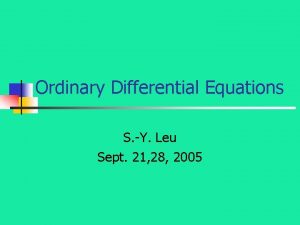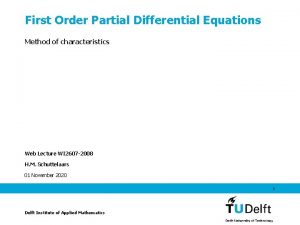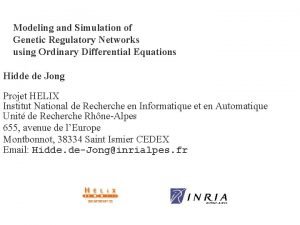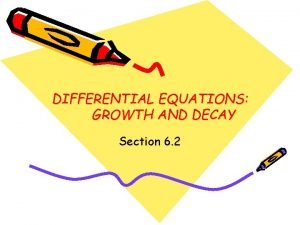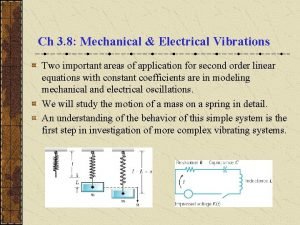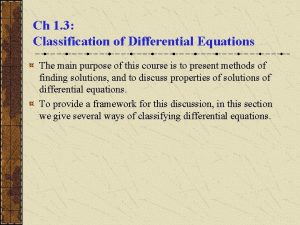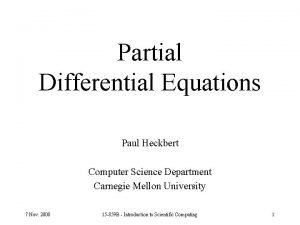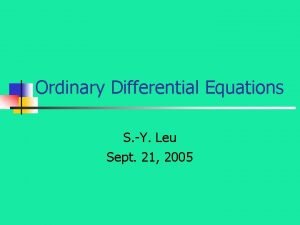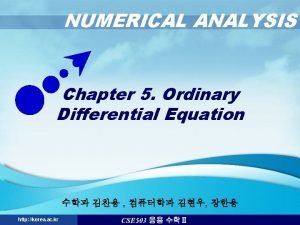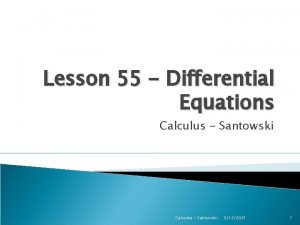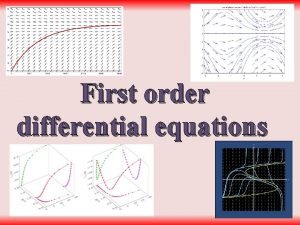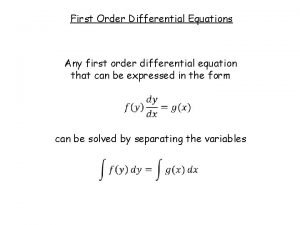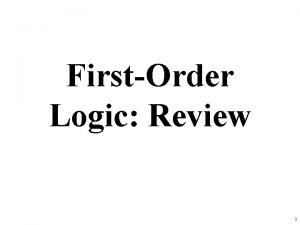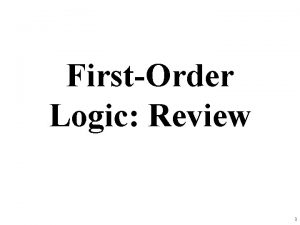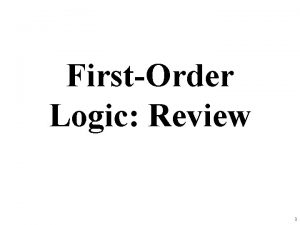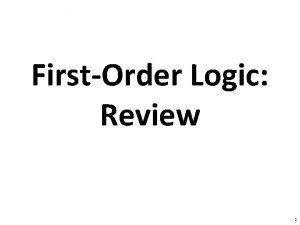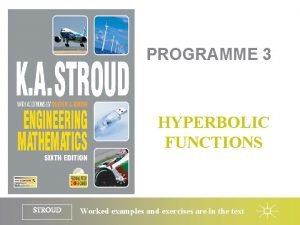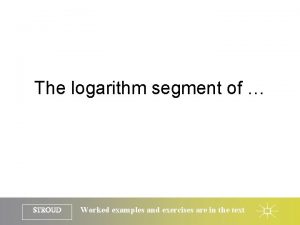FIRSTORDER DIFFERENTIAL EQUATIONS STROUD Worked examples and exercises






















- Slides: 22

FIRST-ORDER DIFFERENTIAL EQUATIONS STROUD Worked examples and exercises are in the text

Introduction Formation of differential equations Solution of differential equations Bernoulli’s equation STROUD Worked examples and exercises are in the text

Introduction Formation of differential equations Solution of differential equations Bernoulli’s equation STROUD Worked examples and exercises are in the text

Introduction A differential equation is a relationship between an independent variable x, a dependent variable y and one or more derivatives of y with respect to x. The order of a differential equation is given by the highest derivative involved. STROUD Worked examples and exercises are in the text

Introduction Formation of differential equations Solution of differential equations Bernoulli’s equation STROUD Worked examples and exercises are in the text

Formation of differential equations Differential equations may be formed from a consideration of the physical problems to which they refer. Mathematically, they can occur when arbitrary constants are eliminated from a given function. For example, let: STROUD Worked examples and exercises are in the text

Formation of differential equations Here the given function had two arbitrary constants: and the end result was a second order differential equation: In general an nth order differential equation will result from consideration of a function with n arbitrary constants. STROUD Worked examples and exercises are in the text

Introduction Formation of differential equations Solution of differential equations Bernoulli’s equation STROUD Worked examples and exercises are in the text

Solution of differential equations Introduction Direct integration Separating the variables Homogeneous equations – by substituting y = vx Linear equations – use of integrating factor STROUD Worked examples and exercises are in the text

Solution of differential equations Introduction Solving a differential equation is the reverse process to the one just considered. To solve a differential equation a function has to be found for which the equation holds true. The solution will contain a number of arbitrary constants – the number equalling the order of the differential equation. In this Programme, first-order differential equations are considered. STROUD Worked examples and exercises are in the text

Solution of differential equations Direct integration If the differential equation to be solved can be arranged in the form: the solution can be found by direct integration. That is: STROUD Worked examples and exercises are in the text

Solution of differential equations Direct integration For example: so that: This is the general solution (or primitive) of the differential equation. If a value of y is given for a specific value of x then a value for C can be found. This would then be a particular solution of the differential equation. STROUD Worked examples and exercises are in the text

Solution of differential equations Separating the variables If a differential equation is of the form: Then, after some manipulation, the solution can be found by direct integration. STROUD Worked examples and exercises are in the text

Solution of differential equations Separating the variables For example: so that: That is: Finally: STROUD Worked examples and exercises are in the text

Solution of differential equations Homogeneous equations – by substituting y = vx In a homogeneous differential equation the total degree in x and y for the terms involved is the same. For example, in the differential equation: the terms in x and y are both of degree 1. To solve this equation requires a change of variable using the equation: STROUD Worked examples and exercises are in the text

Solution of differential equations Homogeneous equations – by substituting y = vx To solve: let to yield: That is: which can now be solved using the separation of variables method. STROUD Worked examples and exercises are in the text

Solution of differential equations Linear equations – use of integrating factor Consider the equation: Multiply both sides by e 5 x to give: then: That is: STROUD Worked examples and exercises are in the text

Solution of differential equations Linear equations – use of integrating factor The multiplicative factor e 5 x that permits the equation to be solved is called the integrating factor and the method of solution applies to equations of the form: The solution is then given as: STROUD Worked examples and exercises are in the text

Introduction Formation of differential equations Solution of differential equations Bernoulli’s equation STROUD Worked examples and exercises are in the text

Bernoulli’s equation A Bernoulli equation is a differential equation of the form: This is solved by: (a) Divide both sides by yn to give: (b) Let z = y 1−n so that: STROUD Worked examples and exercises are in the text

Bernoulli’s equation Substitution yields: then: becomes: Which can be solved using the integrating factor method. STROUD Worked examples and exercises are in the text

Learning outcomes üRecognize the order of a differential equation üAppreciate that a differential equation of order n can be derived from a function containing n arbitrary constants üSolve certain first-order differential equations by direct integration üSolve certain first-order differential equations by separating the variables üSolve certain first-order homogeneous differential equations by an appropriate substitution üSolve certain first-order differential equations by using an integrating factor üSolve Bernoulli’s equation. STROUD Worked examples and exercises are in the text
 Nick stroud
Nick stroud Differential equation rules
Differential equation rules Partial differential equation
Partial differential equation Bernoulli's equation differential equations
Bernoulli's equation differential equations Ordinary differential equations examples
Ordinary differential equations examples Method of characteristics
Method of characteristics Piecewise differential equation
Piecewise differential equation Difference between channel routing and reservoir routing
Difference between channel routing and reservoir routing Non homogeneous differential equation
Non homogeneous differential equation Differential equations and linear algebra strang
Differential equations and linear algebra strang Growth and decay differential equations
Growth and decay differential equations Mechanical and electrical vibrations
Mechanical and electrical vibrations Classification of differential equations
Classification of differential equations Differential equations projects
Differential equations projects Exact differential equation ppt
Exact differential equation ppt Differential equations pauls
Differential equations pauls Cengage differential equations
Cengage differential equations First order ode
First order ode Euler midpoint method
Euler midpoint method Calculus equation example
Calculus equation example Separation of variables
Separation of variables What is a first order equation
What is a first order equation Integrating factor of differential equation
Integrating factor of differential equation




